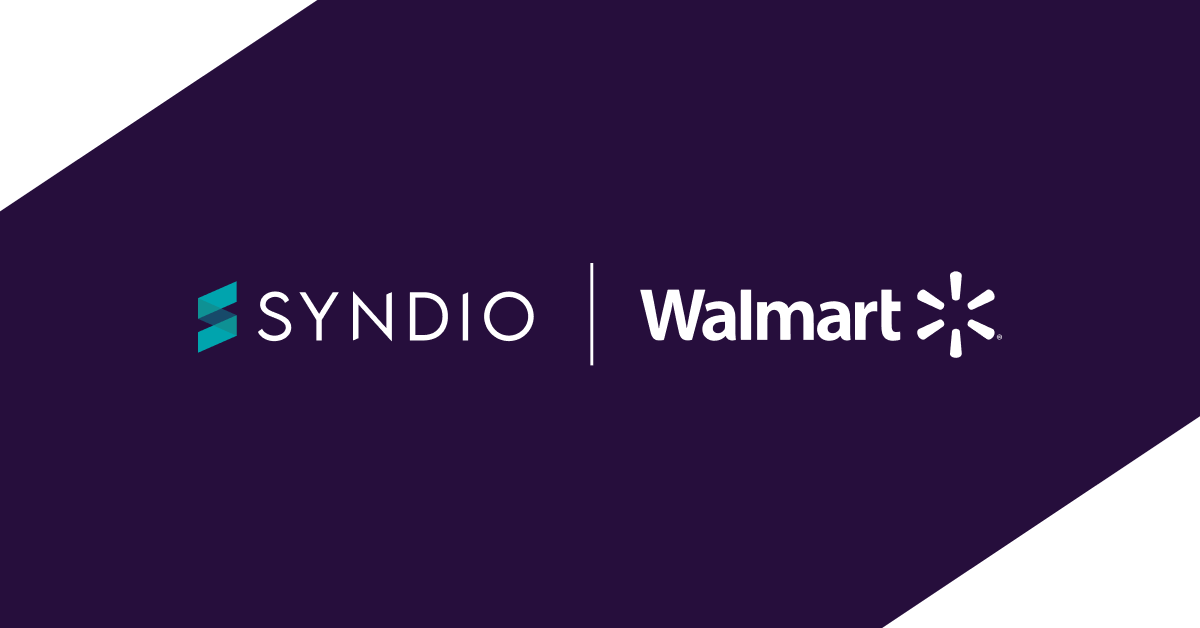Are you struggling to make a compelling case for investing in workplace equity? In today’s climate, compensation and HR leaders must demonstrate the tangible benefits to the business bottom line to gain buy-in from executives, boards, and investors. But how do you measure success and communicate results effectively to all of your stakeholders?
 To get a first-hand perspective of the real-world business case for workplace equity at one of the largest companies in the U.S., we hosted a LinkedIn Live with Kim Lupo, Walmart’s SVP of Global Total Rewards, and Ellen Exum, Walmart’s VP of Executive and Sam’s Club Total Rewards. Hosted by Syndio CEO Maria Colacurcio, the conversation was packed with recommended metrics for measuring ROI and tactics to communicate pay information to all of your stakeholders.
To get a first-hand perspective of the real-world business case for workplace equity at one of the largest companies in the U.S., we hosted a LinkedIn Live with Kim Lupo, Walmart’s SVP of Global Total Rewards, and Ellen Exum, Walmart’s VP of Executive and Sam’s Club Total Rewards. Hosted by Syndio CEO Maria Colacurcio, the conversation was packed with recommended metrics for measuring ROI and tactics to communicate pay information to all of your stakeholders.
Below we share the top seven soundbites and takeaways from the discussion.
1. Standardize how you define and talk about pay equity and workplace equity with stakeholders.
One of the most critical steps in achieving pay equity and workplace equity is standardizing how you define and talk about these concepts with your constituents, from employees to boards and investors. For example, according to Ellen, Walmart’s definition of pay fairness is “externally competitive and internally comparative,” with a focus on ensuring that employees understand they are fairly paid at both a core and individual level.
“The way we define pay fairness at Walmart is very simple: externally competitive and internally comparative. So we define that as ‘fair pay’ overall.”
– Ellen Exum, VP of Executive and Sam’s Club Total Rewards, Walmart
Kim emphasized the importance of also thinking beyond pay equity to understand the bigger picture of workplace equity, which she described as the interconnected system encompassing talent and reward systems. This involves considering performance equity, development equity, and promotion equity, among others. To achieve this, companies need to categorize and catalog job criteria accurately to compare roles and determine what “equitable” means across pay, development, and advancement.
Finally, don’t get bogged down in Total Rewards lingo when communicating about these topics. Employees, hiring managers, board members, and investors may not all have the same level of understanding or interest in these concepts. In fact, Total Rewards terminology can be quite technical and unfamiliar to many people. Therefore, it’s important to translate into plain, accessible language that everyone can understand. For example, “pay equity” may not be immediately clear to an employee, but if described as “equal pay for equal work,” the message becomes more straightforward. By using more simple language, you can ensure that everyone involved in the conversation can easily understand and engage with the topic at hand.
2. Leverage the expansive research that’s readily available as proof points tying workplace equity to business outcomes.
Kim shared that when they talk about workplace equity at Walmart, they leverage the wide breadth of existing research that demonstrates the positive impacts of workplace equity on business outcomes like talent attraction, retention, productivity, engagement, and on. For example, she shared the following stats:
- There’s a 3% increase in revenue for every 1% increase in gender diversity. (Source)
- Over 75% of employees and job seekers say that a diverse workforce is super important when they’re evaluating companies, and over ⅓ wouldn’t consider a company if there isn’t diversity in the workforce. (Source)
- Josh Bersin research shows that companies with rewards systems that are fair and equitable are 4x more likely to have amazing business results and 7x more likely to innovate and adapt and change. (Source)
- The majority of us don’t believe our pay is fair. And if we don’t believe our pay is fair, we’re 15% more likely to quit and 13% less engaged. (Source)
“It’s not the actual pay that leads to these outcomes, it’s whether or not [employees] believe it or perceive it. That’s an unlock for the criticality of work around pay transparency.”
– Kim Lupo, SVP of Global Total Rewards, Walmart
3. Ground the business case in your data, using best-in-class workplace equity analytics technology.
Data and analytics are crucial to building the business case for workplace equity. Kim said “To tell our story compellingly in a way that builds trust across all stakeholder groups, it has to be grounded in data.” This is particularly essential for a company like Walmart, which has 1.2 million frontline associates in the U.S. — but doing so efficiently and effectively with such large data sets requires leveraging technology.
Kim shared that Walmart has seen clear benefit of working with Syndio’s Workplace Equity Analytics Platform: “Imagine trying to do a pay equity analysis for 2.4 million worldwide associates without a great tool to help with the ingestion of data, modeling, helping to explain the data, and inform the decision-making.”
“Do not underestimate the benefit that will be delivered to you and your company if you leverage a best-in-class technology solution to help with this work, as I know we do at Walmart with Syndio.”
– Kim Lupo, SVP of Global Total Rewards, Walmart
And don’t do this work in a silo — as Kim said “This is not an issue for a Compensation team to solve alone.” Kim recommended that Total Rewards teams bring in partners from People, Talent, Legal, and business intelligence.
4. Hook the ROI to your company values.
While the financial, outcome-focused metrics are crucial for the business case for investing in workplace equity, another side of the equation that shouldn’t be overlooked is drawing a clear line to how this work aligns with your values. For example, Walmart has made integrity a core part of their company values, so delivering on that commitment is critical to their brand.
“Ensuring we have an equitable pay system is foundational to our purpose and to our values as a company. So when we talk about [workplace equity], we hook it to that.”
– Kim Lupo, SVP of Global Total Rewards, Walmart
As Kim emphasized, “A healthy, equitable, fair pay system is a prerequisite for delivering on our values.” In other words, workplace equity isn’t just good for business; it’s also the right thing to do and crucial to prove they are walking their talk. By prioritizing equity and fairness, companies can build trust with employees and job seekers, and demonstrate that their commitment to social responsibility is genuine.
5. Be proactively transparent about the “what, why, how, and where” of pay to shape the narrative before employees make their own assumptions.
“The reality is that pay transparency is already here and it’s here to stay. So we either own our own pay narrative, or have it assumed or told by others (and often incorrectly).”
– Kim Lupo, SVP of Global Total Rewards, Walmart
Josh Bersin research shows that how people perceive and feel about pay fairness is more important than the pay itself. This is why proactive transparency is so important. During the conversation, Maria shared the quote: “Nature abhors a vacuum,” explaining that if you don’t shape the narrative you want to tell about pay, your employees will come up with their own story — which may not be accurate.
Ellen agreed and said that the feeling of fairness also comes from not only what you share, but what you actually do. “Does what you do match what you say?” As many organizations move to pay for performance, employees need to feel that the downstream processes that lead to pay fairness are also fair (i.e. that their performance evaluation is fair, that the goals set for them are fair, and that there isn’t bias in all those systems).
To help employees understand and trust that they are being treated fairly requires being open about compensation principles, benchmarking, performance metrics, and program mechanics. Kim explained that it can be helpful to think about pay transparency along a continuum. She shared that an effective pay transparency strategy incorporates the “what, why, how, and where” of your pay systems:
-
- The “what”: This is what individuals get paid and all the different components of rewards that go into determining pay. Is access to info on pay easily discernible and accessible? Is there an avenue for seeking answers to questions?
- The “why”: This is why you pay the way you do, i.e. your compensation principles and philosophy. This means being open about what factors go into determining salary ranges and how the company benchmarks against its peer group.
- The “how”: This is how your pay system works. This includes detailed information about promotion and new hire guidelines, as well as the mechanics behind how programs and processes are designed and implemented. This includes how the pay equity process fits into other annual compensation rhythms. Employees also want to know how individual performance factors into bonus and annual compensation decisions — Kim described this as “how performance comes alive in the pay system.”
- The “where”: This is openness into where each individual employee falls in the pay system and where their pay falls within the salary range, as well as where it falls in internal equity processes.
6. True investment in workplace equity is ongoing and embedded in day-to-day operations. This isn’t just a one-time fix.
“We have to look at [workplace equity] as a movement, and not just a single point in time. It’s so much more comprehensive because by the time you have gotten to pay, there are so many things that have happened that need equity in those processes.”
– Ellen Exum, VP of Executive and Sam’s Club Total Rewards, Walmart
Workplace equity is not something you achieve once and then check off your list. Ellen emphasized that this is not just a matter of addressing specific issues or moments in time so that you can say “we fixed this,” and move on. Instead, as Kim said, “Workplace equity isn’t something you achieve. It’s something you’re always achieving.”
Employees join, move within, and leave your company all the time, and pay decisions happen every day, which means the balance of equity at your company is always in motion. To stave off issues before they show up, companies must proactively embed equity into all pay decisions, processes, policies, and practices — and not just pay, but also hiring, promotions, and other decisions that impact employees. As Kim said, “We have to get pay right from the start, at every moment in the employee lifecycle… Because if you don’t, inequities just continue to exacerbate.”
7. Take it one step at a time: Begin with pay equity and move towards transparency.
When it comes to workplace equity, it’s important to remember that you don’t have to make huge changes overnight — instead, progress can be made in phases. As Maria noted, you can focus on establishing your pay equity processes first. Then it may be time to take the next step and become more transparent about your compensation practices.
Kim shared that Walmart has been on their pay equity journey for a while and has partnered with Syndio for three years to perform regular analyses, but now: “We’re at a pivot moment for how we talk about pay and how transparent we are… about our methodology and details of results.” While many employers have been hesitant to share the details of their pay practices, Kim suggests that now is the time to start talking about it in a more open way. By being proactive, employers can ensure that they are controlling the narrative around their compensation practices, rather than leaving it up to others.
“Don’t underestimate your organization’s appetite for this topic. Be vulnerable, be transparent, talk about the journey that you’re on.”
– Kim Lupo, SVP of Global Total Rewards, Walmart
One hesitancy many companies have around transparency is concern over whether their employees will understand the details of pay practices. However, as Kim emphasizes, “Do not underestimate your employees. They want to learn about this and how it comes to life.” By being transparent and open, employers can help their employees better understand the compensation process and feel more invested in the company as a whole.
Another common concern around transparency is potential legal issues. However, as Kim notes, transparency does not put attorney-client privilege at risk. By being vulnerable and transparent about the journey towards greater equity, employers can show that they are committed to doing the right thing.
More lessons from Walmart’s workplace equity journey
“The ROI [of workplace equity] for us [at Walmart] is around our ability to attract, retain, engage, and grow the amazing talent we need to fuel our business.”
– Kim Lupo, SVP of Global Total Rewards, Walmart
Kim’s and Ellen’s experiences at Walmart show that making a case for workplace equity requires a strategic approach that is grounded in data, aligned with company values, and communicated transparently to all stakeholders. By standardizing definitions, leveraging research, owning their data, and investing in ongoing operations, compensation and HR leaders can build a compelling business case that delivers tangible benefits to the bottom line while promoting a more equitable workplace for all employees.
But that’s not all! Watch the full LinkedIn Live recording for all the insights, then check out our infographic on the business case for workplace equity for more supporting stats.
The information provided herein does not, and is not intended to, constitute legal advice. All information, content, and materials are provided for general informational purposes only. The links to third-party or government websites are offered for the convenience of the reader; Syndio is not responsible for the contents on linked pages.


